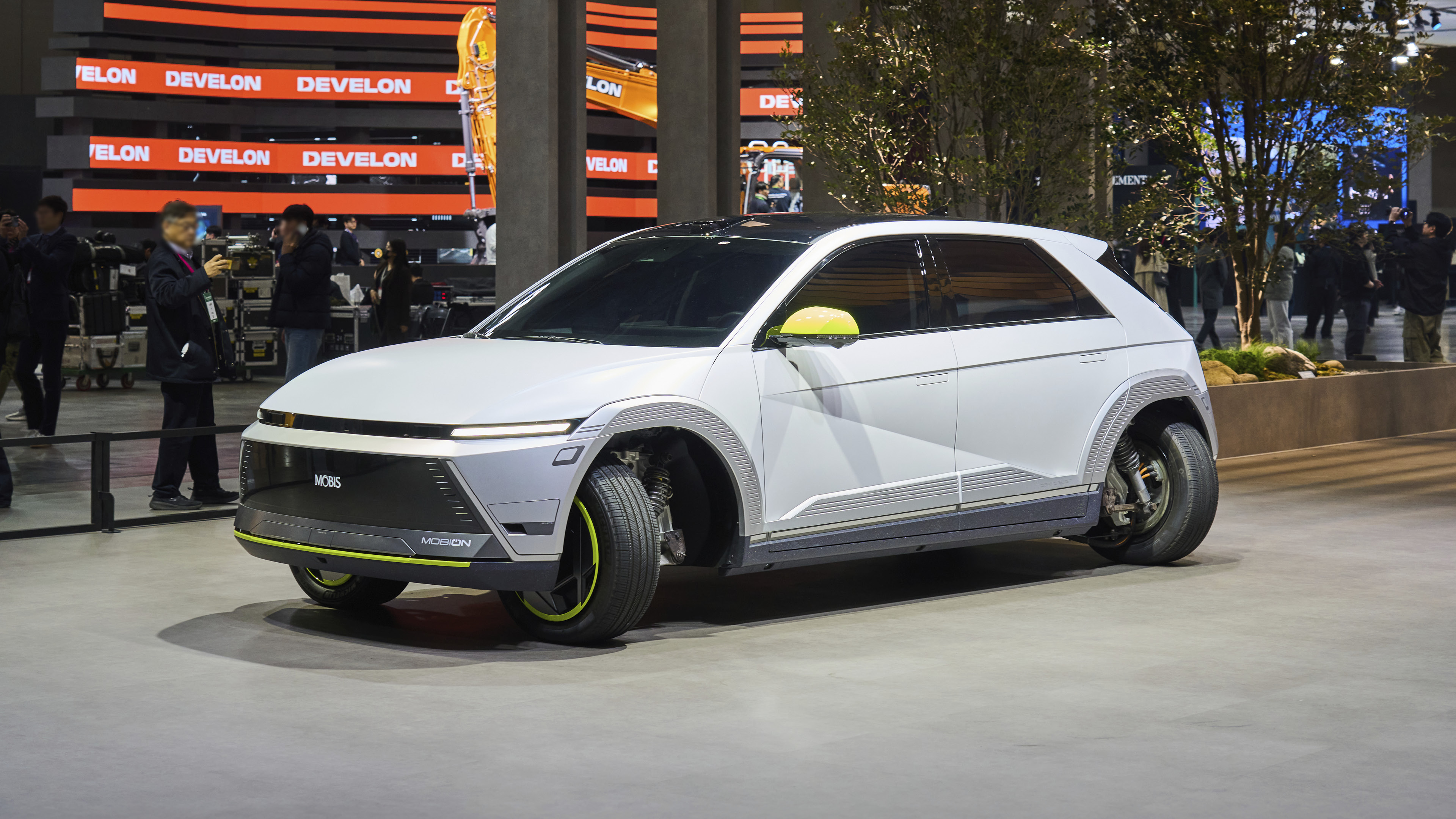
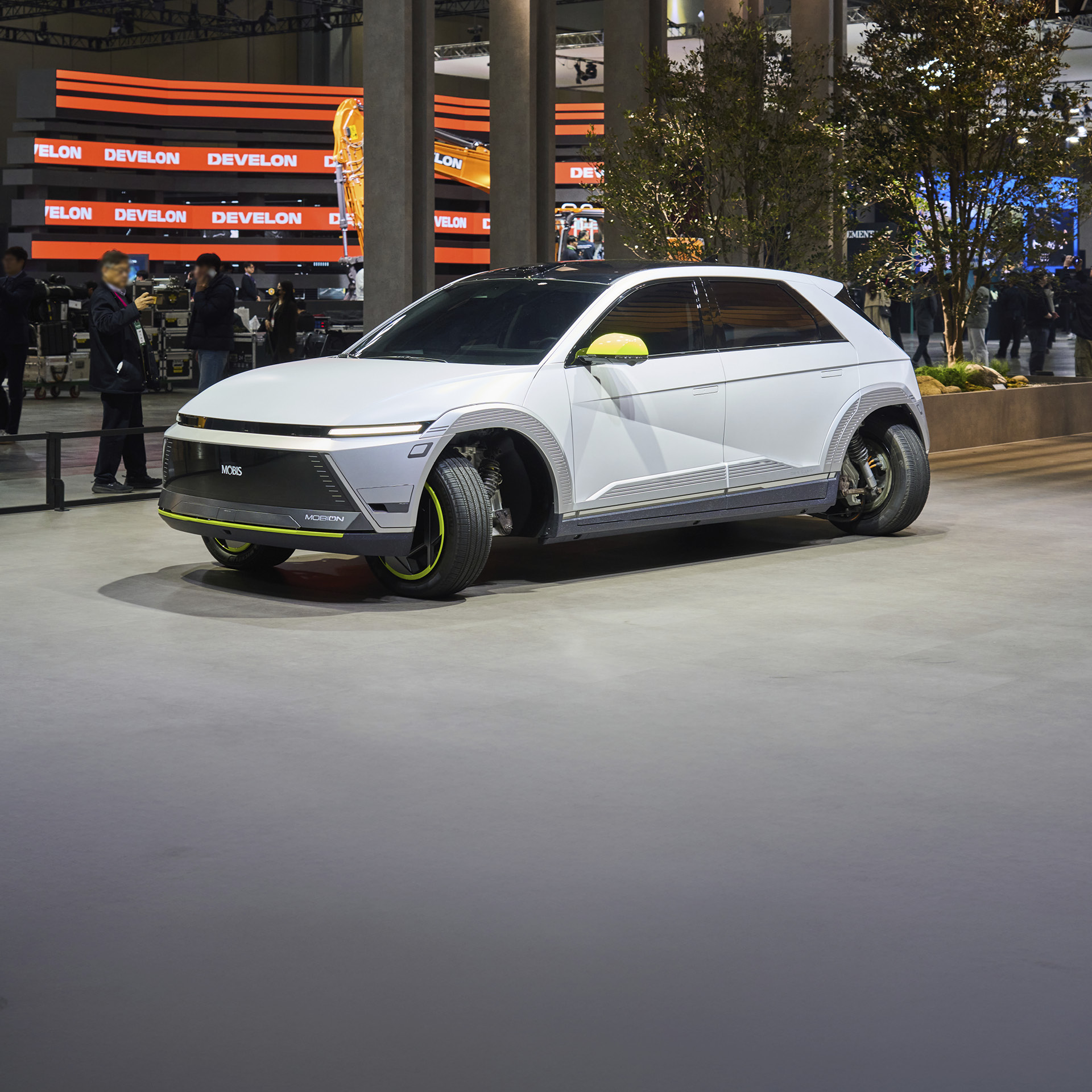


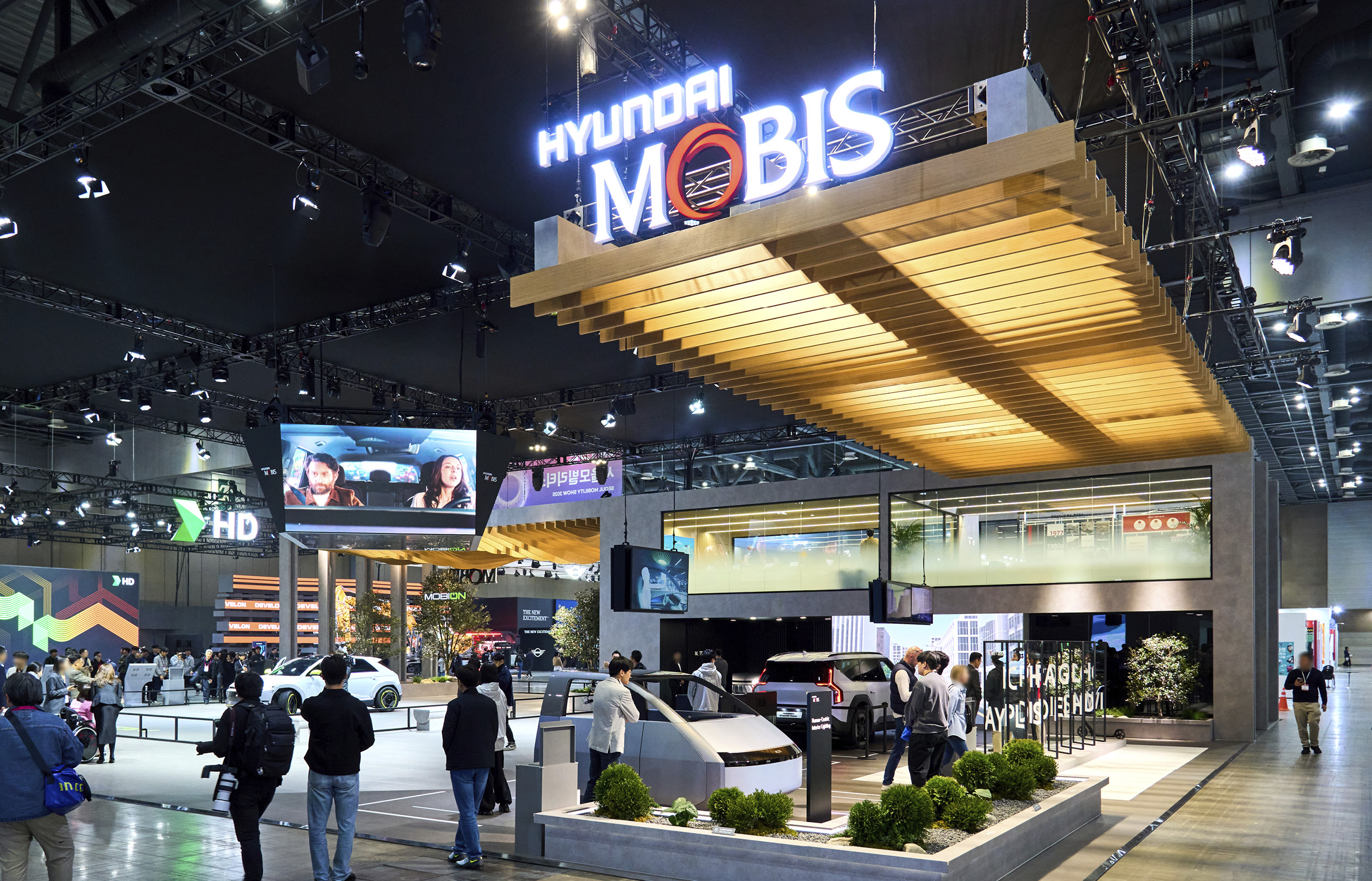
South Korea’s flagship automotive exhibition, the 2025 Seoul Mobility Show, opened on April 4 at KINTEX in Goyang, Gyeonggi Province. This year’s show was held under the theme “Mobility, Everywhere”—the idea that mobility should be seamlessly accessible anytime and anywhere. In line with this theme, Hyundai Mobis unveiled a wide range of futuristic mobility technologies. Among the highlights of its exhibit were the Holographic Windshield Display (Holographic HUD), the MOBION demonstrator equipped with the next-generation e-Corner System, and Human-Centric Interior Lighting—a lighting system that adapts based on the user’s mood and driving environment.
Hyundai Mobis also designed an interactive exhibition space that put the visitor experience front and center. Visitors were invited to directly experience and explore these technologies, gaining insight into how they work and how they could reshape future mobility. Let’s take a closer look at the key technologies Hyundai Mobis introduced at this year’s show.
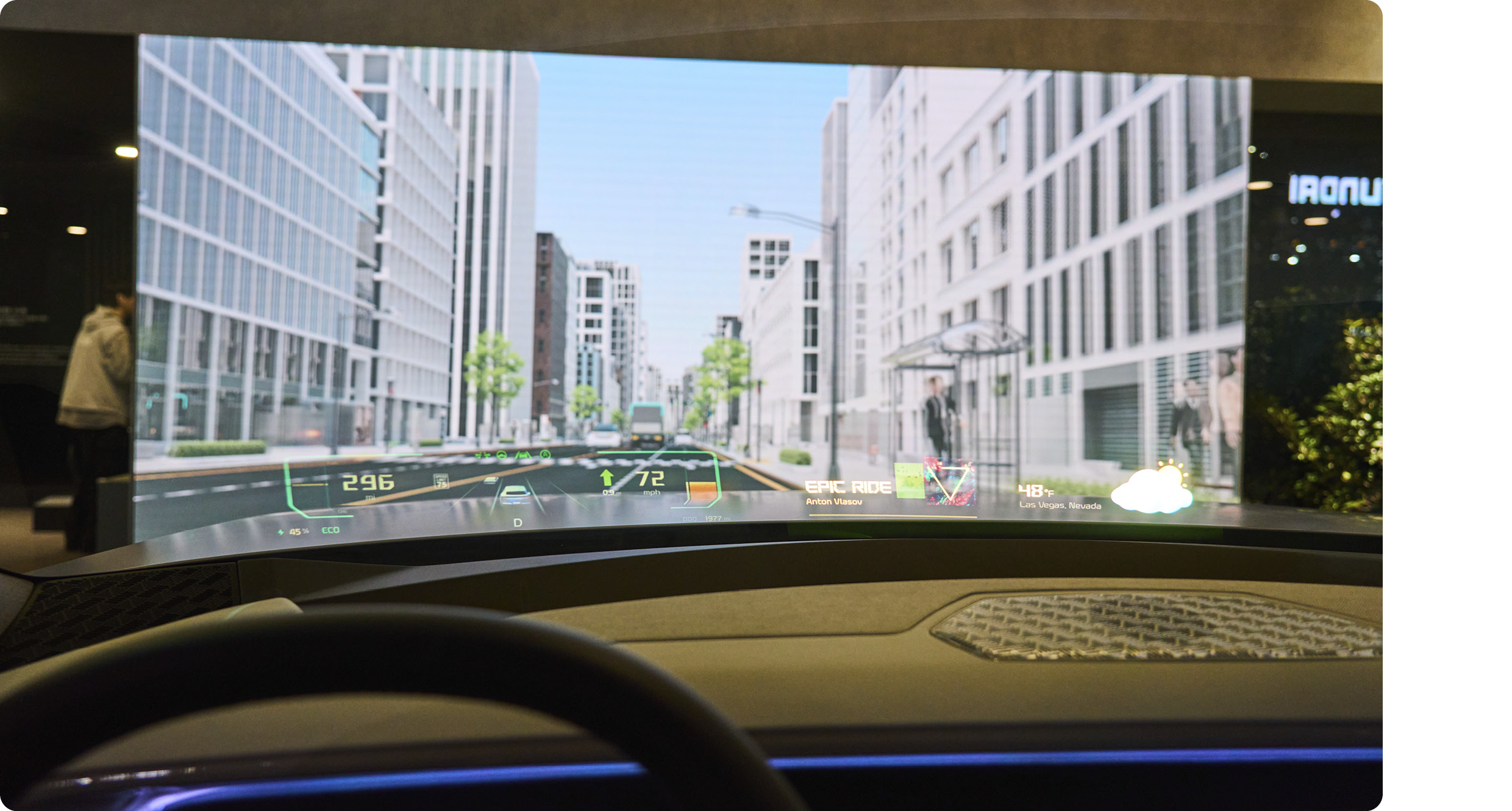
Leading the lineup at the Hyundai Mobis booth was the Holographic Head-Up Display (HUD)—a next-generation display technology that projects driving information, navigation, media, and video content directly onto the windshield with vivid clarity. The Holographic HUD is not yet commercially available and made its domestic debut at the 2025 Seoul Mobility Show. Hyundai Mobis is developing the technology in collaboration with ZEISS, one of the world’s top optical firms.
The system uses a holographic optical element (HOE)—a film applied to the lower portion of the windshield—along with a dedicated projector to cast holograms directly onto the glass without the need for a physical panel.
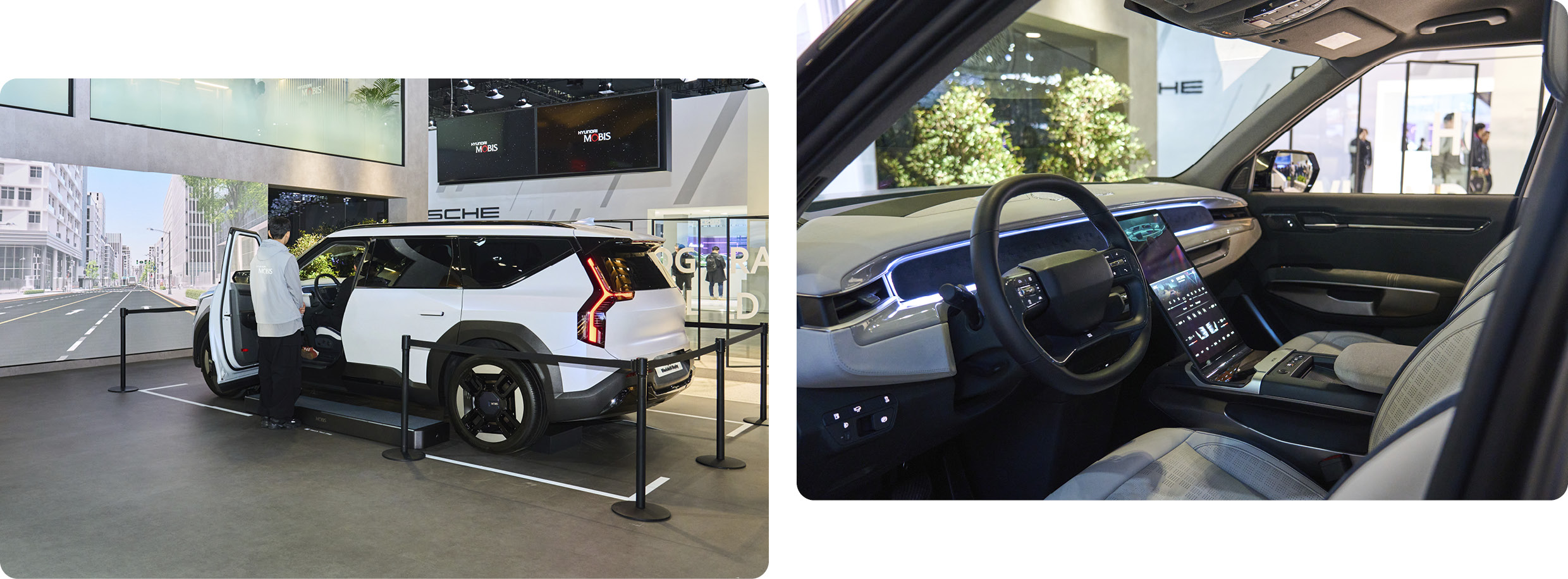
The Hyundai Mobis concept car featuring the Holographic HUD ditches the traditional instrument cluster, replacing it with a sleek crash pad design that maximizes the forward field of view and creates a more spacious, immersive driving experience. This concept demonstrates how future mobility can eliminate bulky in-car displays by integrating key information into the windshield itself.
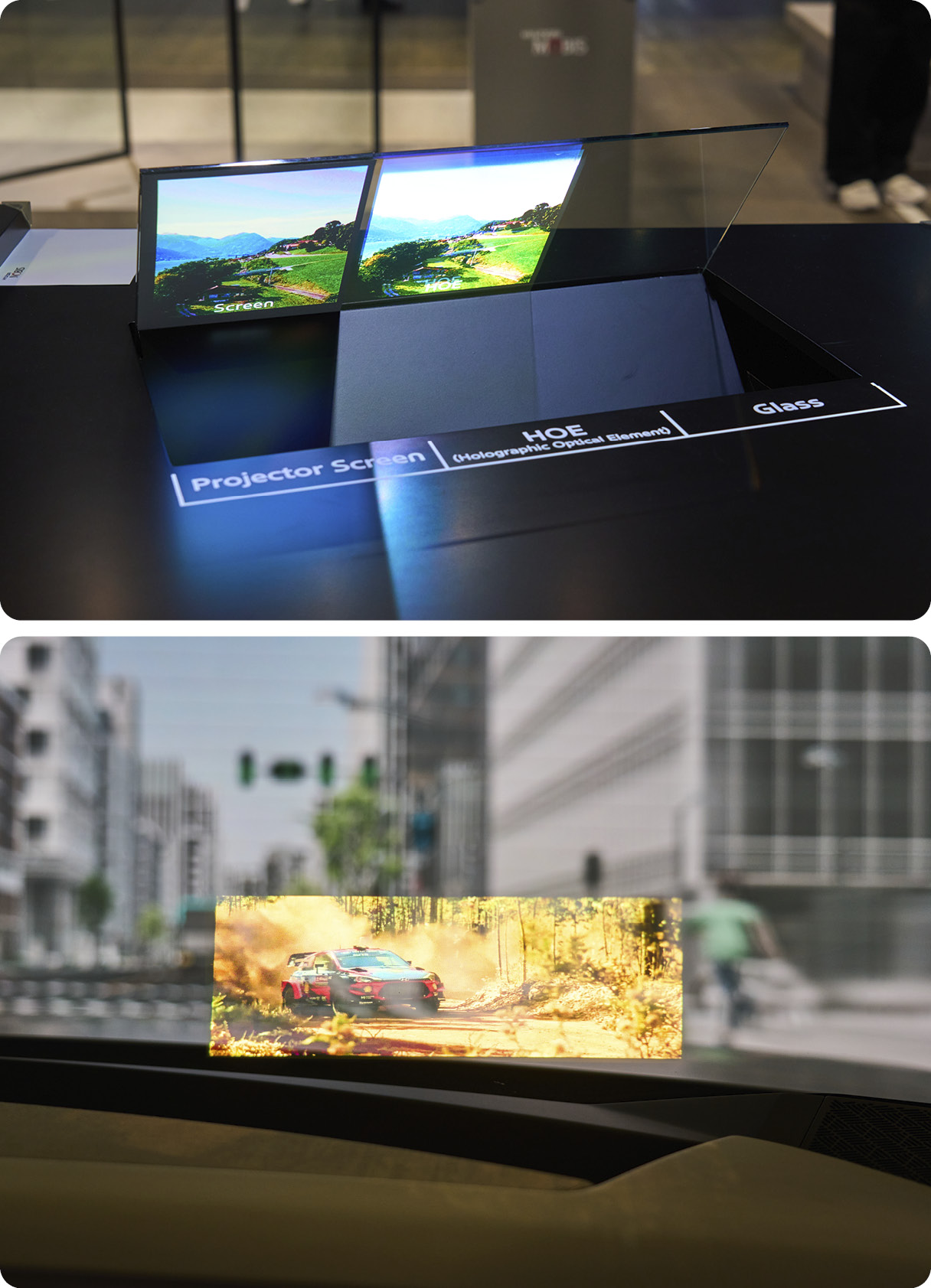
The HOE film is only 0.1 mm thick and highly flexible, enabling it to project high-resolution visuals on curved surfaces like the windshield. Furthermore, HOE technology allows precise control over light distribution, enabling different content to be shown to the driver and front passenger simultaneously.
For example, while the vehicle is stationary, entertainment content can be displayed on both the driver and passenger sides. While in motion, the display can be limited to the passenger’s view only. Hyundai Mobis aims to begin mass production of the Holographic HUD by 2027, setting a new standard for vehicle interior design and digital interaction.
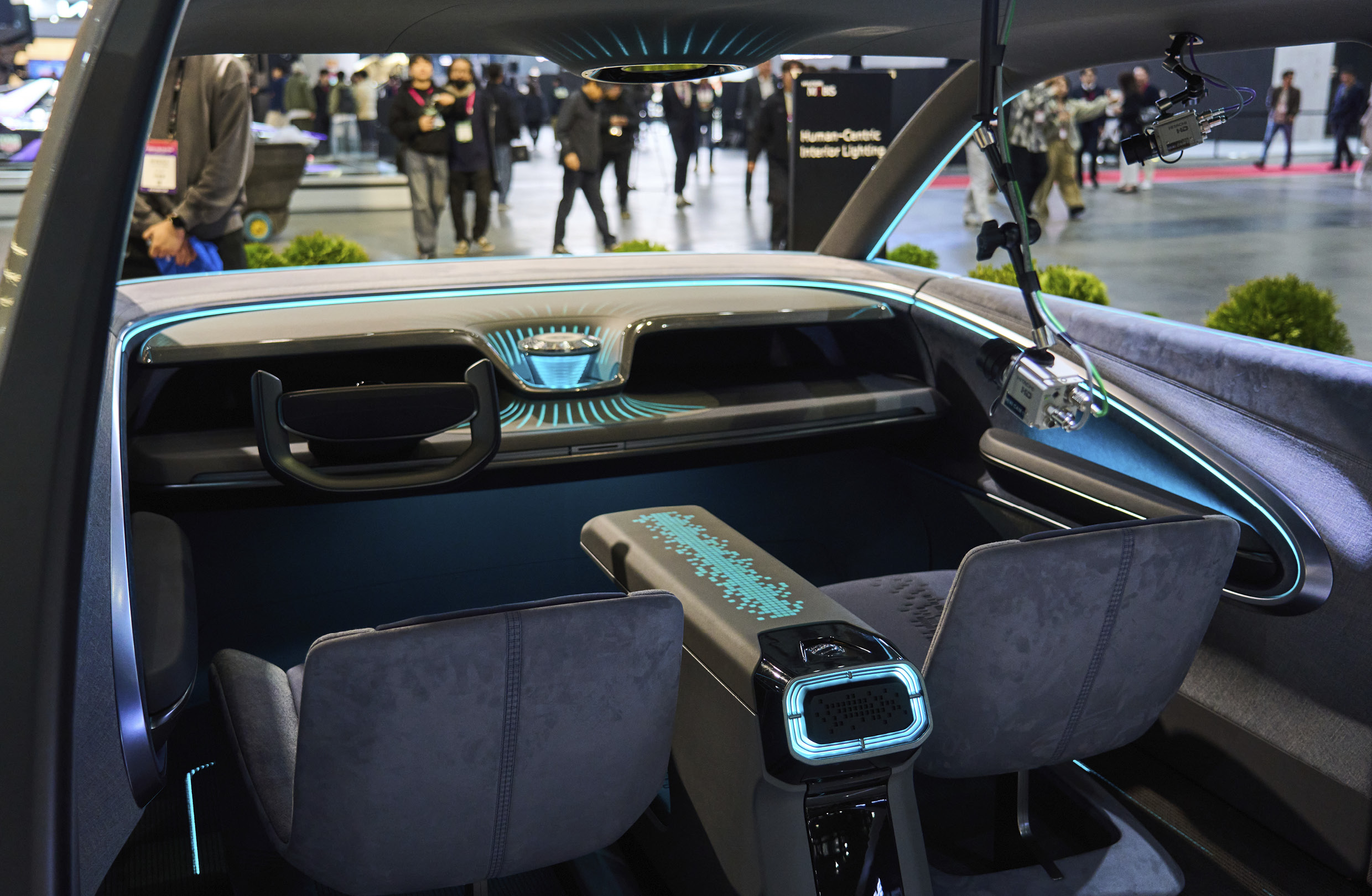
Also on display was Human-Centric Interior Lighting—a lighting system that dynamically adjusts color, brightness, and patterns based on various use cases and user states. The system monitors biometric signals and eye movement to deliver lighting effects that enhance circadian rhythms and maintain mental wellness. With 32 lighting patterns designed to support all stages of the passenger experience—from entering the vehicle to riding and exiting—it helps reduce stress and motion sickness, provides environmental feedback, prevents exiting risks, and includes features like ultraviolet (UVC) sterilization.
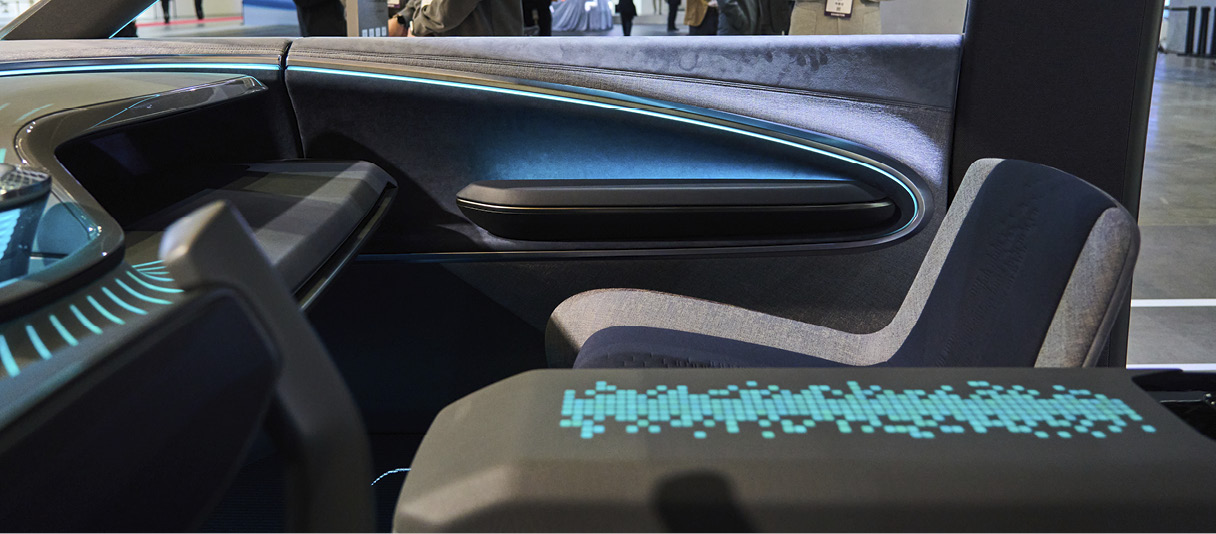
Upon entering the cabin, the system analyzes the driver’s stress level and uses color-coded lighting to communicate their condition: red for high stress, yellow for eye fatigue, and green for relaxation. The brightness is also adjusted to help induce calm and steady breathing.
During driving, the lighting automatically adjusts and syncs with navigation data to provide “infotainment lighting” that visually represents real-time road information. Red indicates danger, yellow signals caution, and green represents standard guidance. The system also detects nearby obstacles in tight spaces and blinks the nearest light source to a-lert the driver. Also, motion-sickness mitigation lighting changes pattern intensity to match driving speed, helping passengers perceive motion more clearly and reducing discomfort.
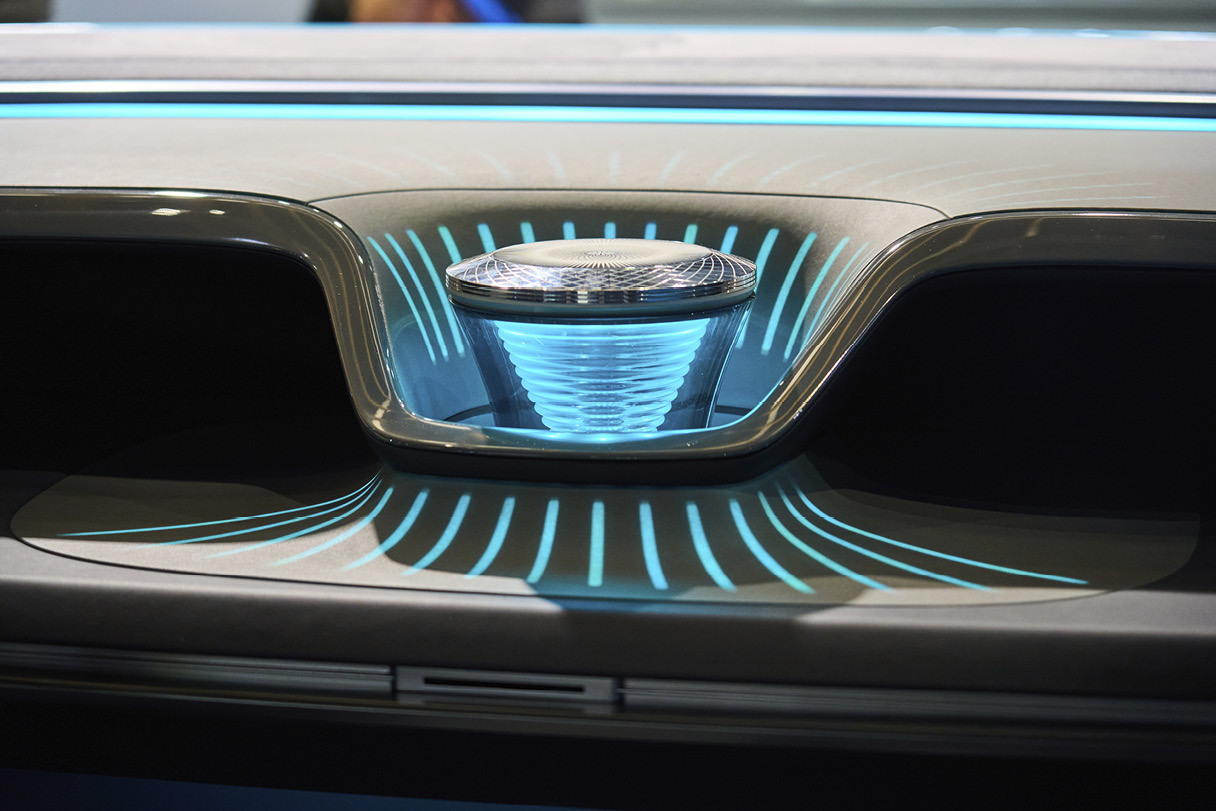
When the vehicle is parked, the system transitions into a rest mode. The ceiling lights can display custom colors or ambient tones inspired by the outside environment to enhance cabin spaciousness. Smart seatbelt lighting for children changes color based on their mood and condition, while low-mounted pet-friendly lights provide comfort for animal passengers. The lighting system can also help stimulate vitamin D production through specialized lighting frequencies.
Another standout feature is the anti-door-ding safety light. Sensors monitor the angle of the door when opened, and if a nearby vehicle or pedestrian is detected, the interior lighting blinks red to warn passengers before exiting.
Human-Centric Interior Lighting embodies Hyundai Mobis’s commitment to user-focused innovation. By reinterpreting the role of automotive lighting through wellness, safety, and emotional engagement, the system showcases the company’s evolving vision of mobility technology.
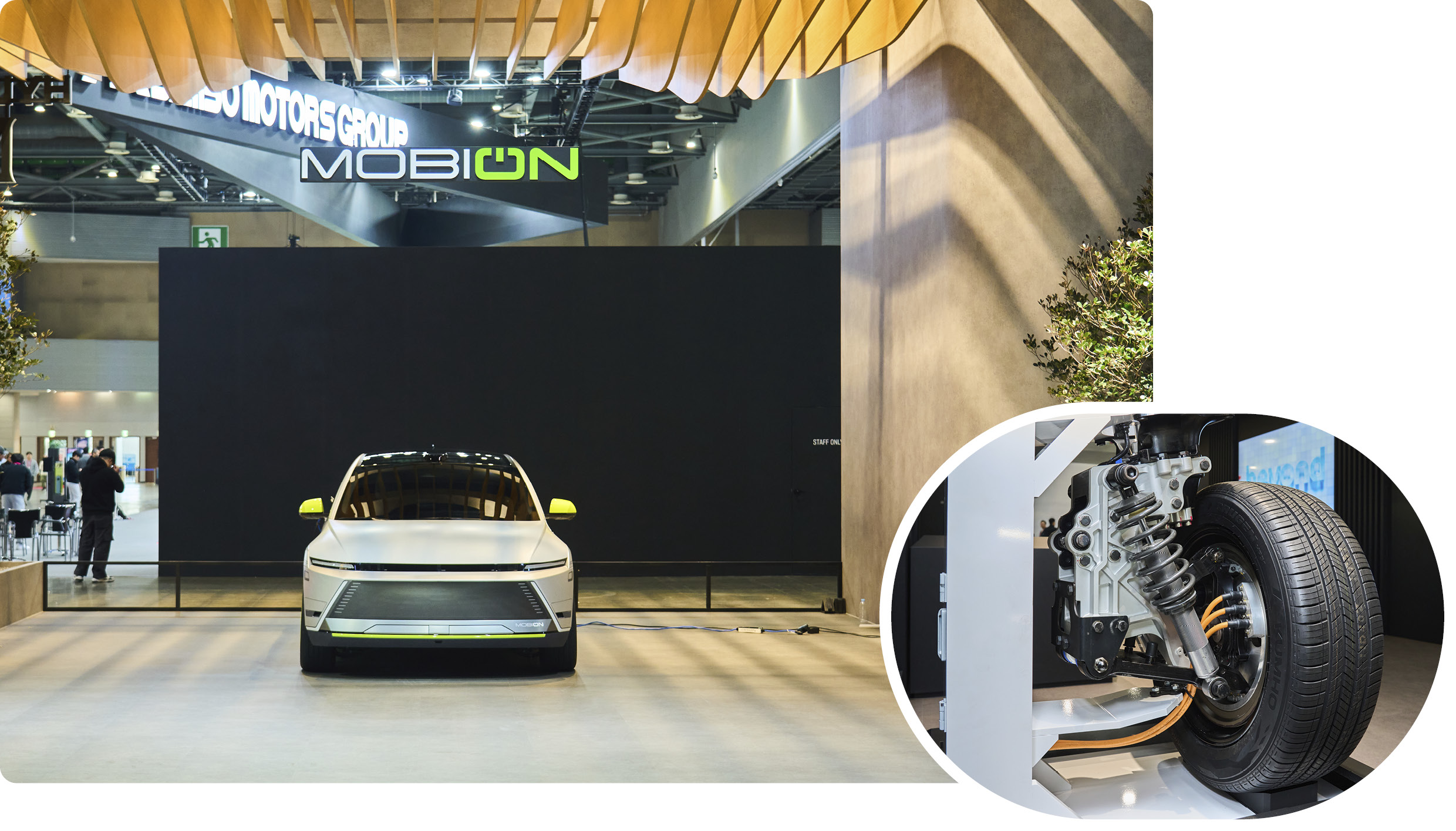
MOBION is Hyundai Mobis’s working demonstrator vehicle equipped with the next-generation e-Corner System—a breakthrough electric propulsion module that allows each wheel to be controlled independently. The name combines “Mobis” and “ON,” symbolizing the beginning of a new era of mobility. Based on its four independently steerable wheels, MOBION enables movements that are impossible for conventional cars—such as parallel driving, pivot turning, and diagonal movement.
MOBION performs pivot turns and spins in place with ease.
Traditional automotive wheels are powered via mechanical drive shafts and guided by steering links. In contrast, the e-Corner System integrates an in-wheel motor, electronic braking, steer-by-wire, and a damper into a single compact unit—eliminating the need for mechanical connections. This modular system allows each wheel to move in multiple directions independently.
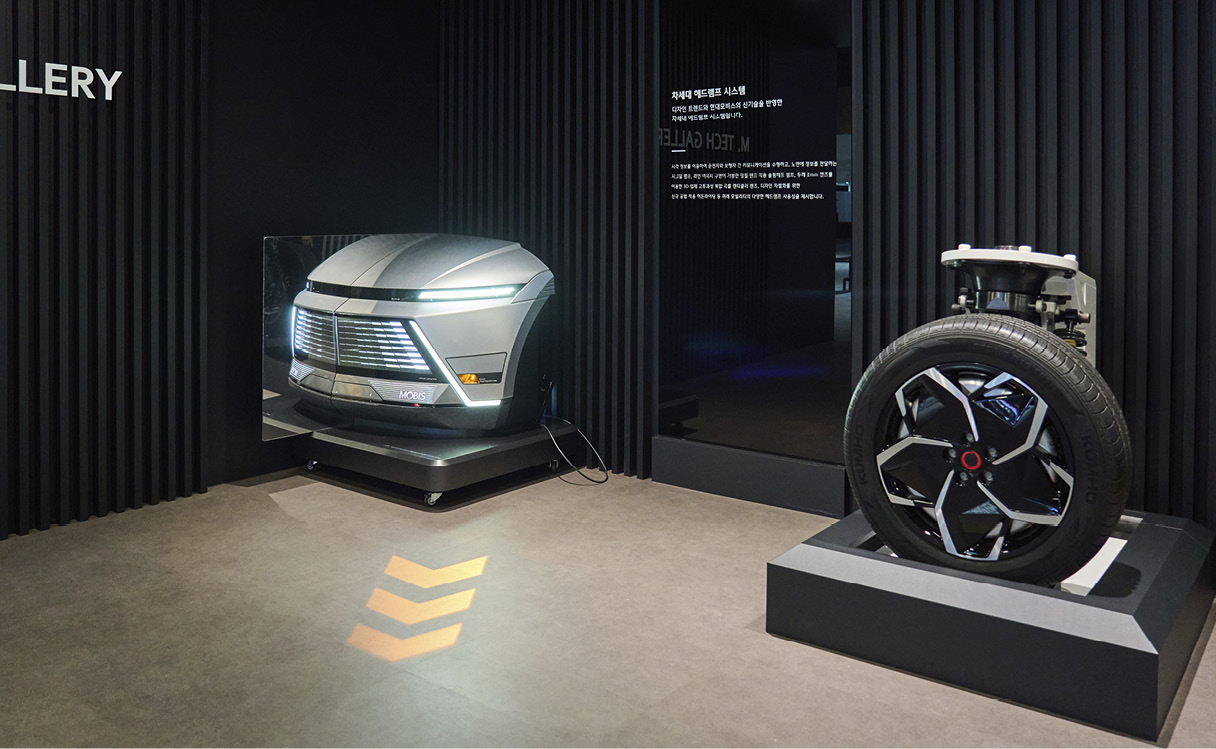
MOBION also includes Communication Lighting, a technology that allows the vehicle to interact with pedestrians using light signals. When a pedestrian is detected, the system projects a crosswalk pattern on the ground and indicates the direction of safe crossing on the front bumper. Simultaneously, the rear bumper displays a warning to nearby vehicles not to overtake or change lanes while a pedestrian is crossing—actively promoting safety for all road users.
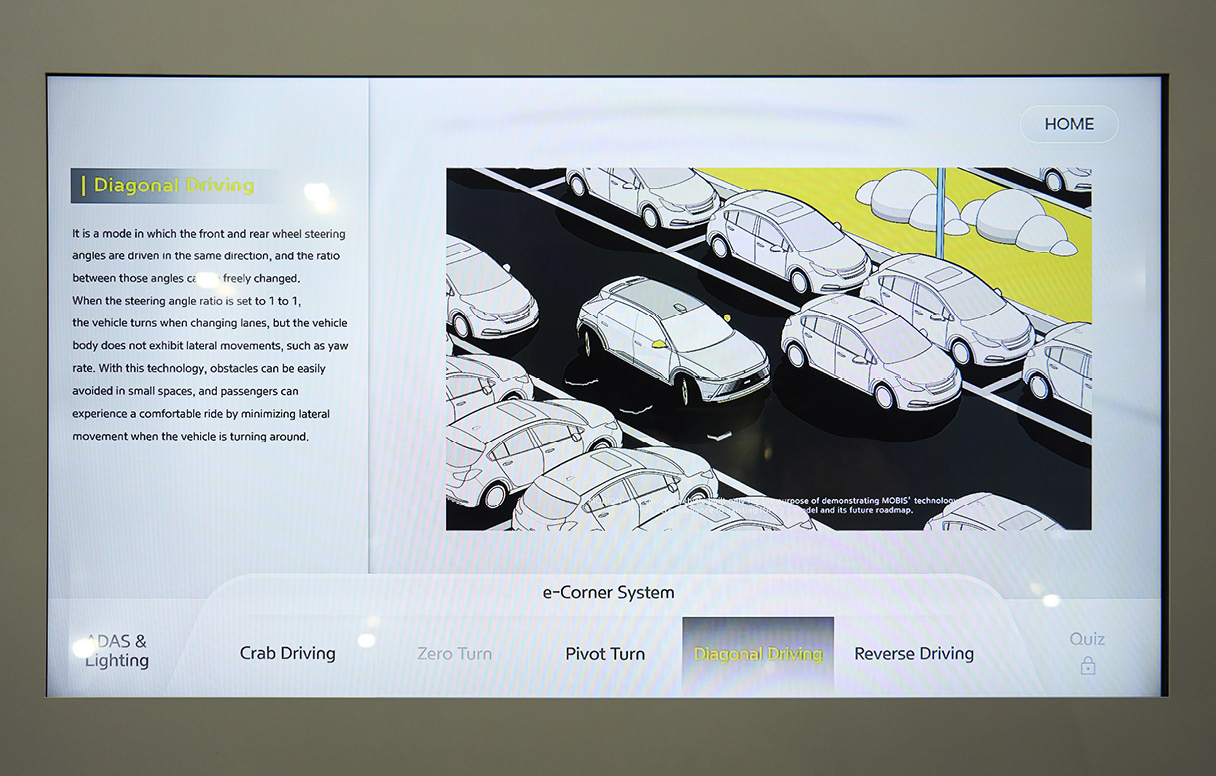
Visitors to the Hyundai Mobis pavilion could experience firsthand how the company’s innovations would shape the future of mobility—offering safer, smarter, and more convenient transportation experiences. The exhibit was designed to make next-generation mobility feel approachable, not futuristic.

The M.Tech Gallery served as a hands-on learning space where professional guides explained the engineering behind each innovation in an easy-to-understand format. Visitors could see how these technologies worked at a component level—bridging the gap between future vision and practical application.
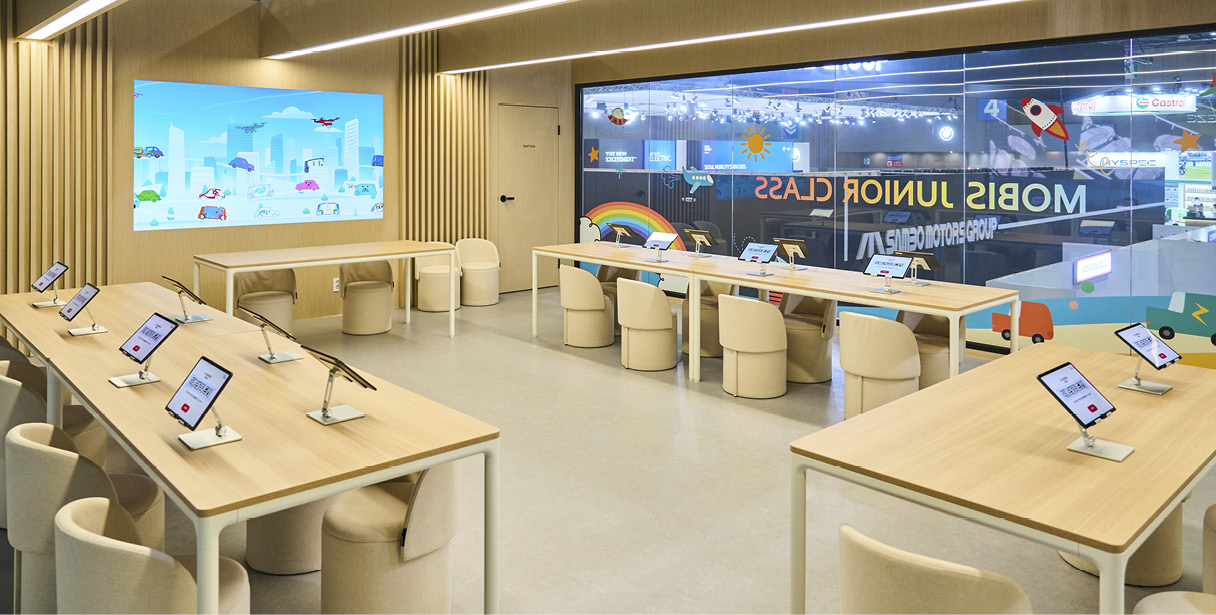
For younger visitors, Hyundai Mobis hosted a Junior Engineering Classroom where elementary school students could explore 3D hologram projection using light refraction principles or build miniature solar-powered cars. Watching these young enthusiasts engage with mobility technology made for an uplifting experience.
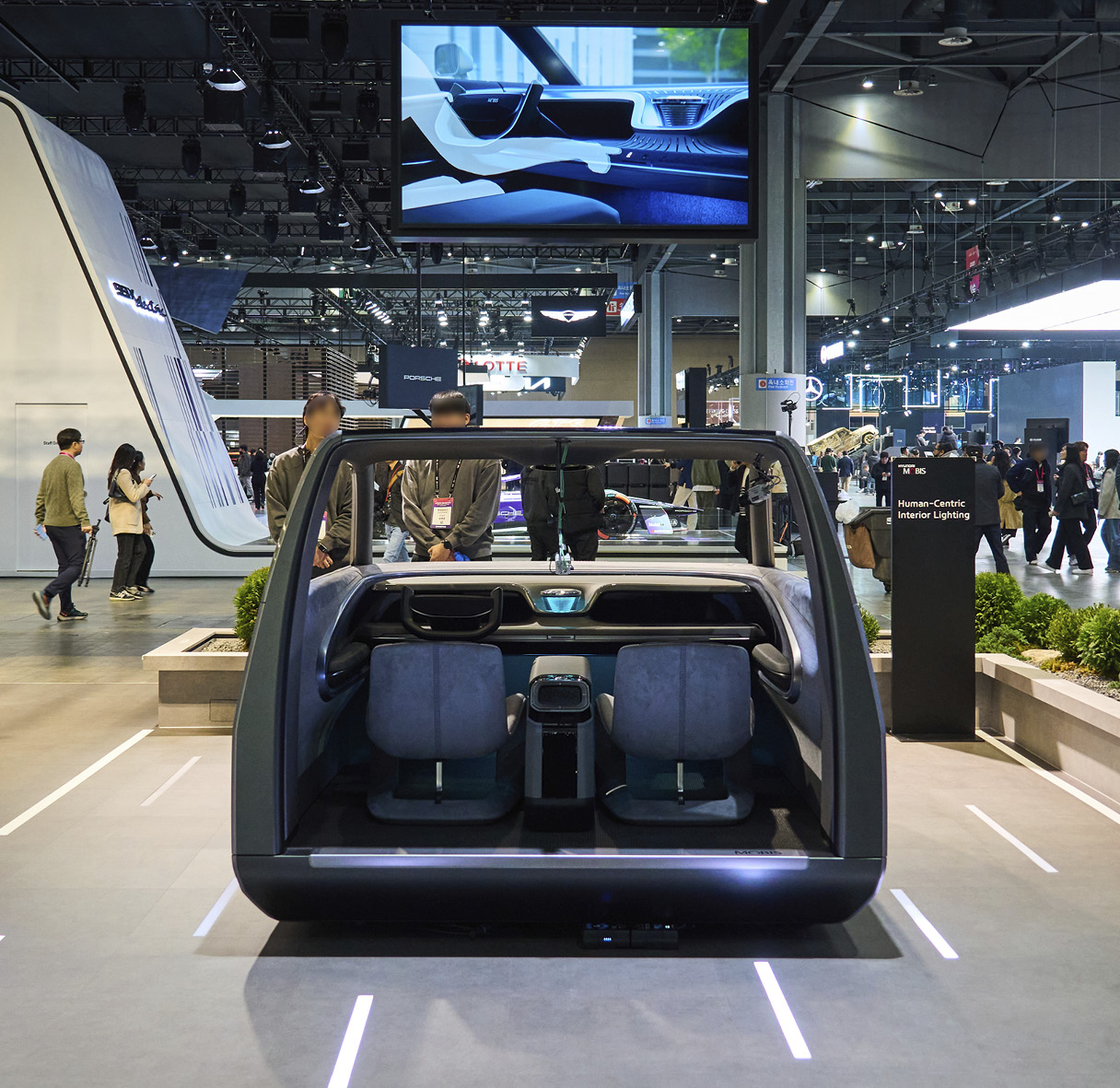
Through its showcase at the 2025 Seoul Mobility Show, Hyundai Mobis clearly communicated its vision of a human-centered mobility future. What stood out was that many of the technologies on display are not far-off dreams—they are fast approaching real-world implementation. Hyundai Mobis continues to refine its customer-first philosophy by developing future mobility solutions that prioritize health, safety, and convenience. And that’s what makes its evolving technology philosophy worth watching.
Photography by Hyuk-soo Cho